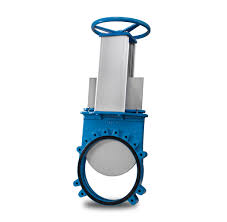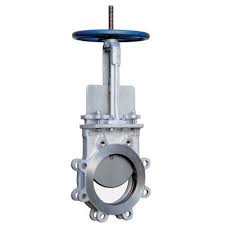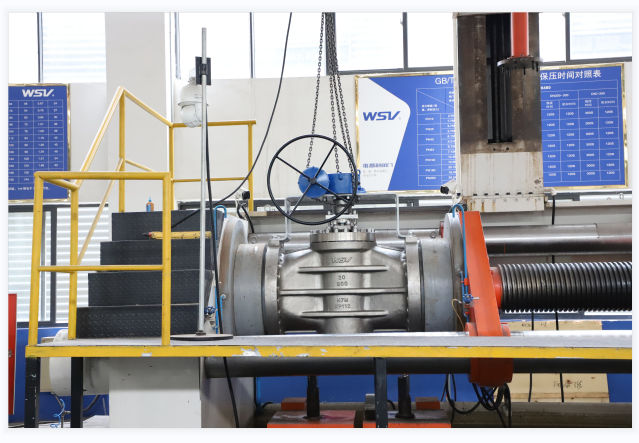Knife Gate Valve

The Application of Knife Gate Valve
Knife gate valves, such as Rotork Knife Gate Valve and Cameron Knife Gate Valve, offer distinct advantages over traditional valves like ball and gate valves. Unlike the rising stem gate valve, knife gate valves operate by raising and lowering a single gate to control flow, making them ideal for applications requiring frequent operation. They’re particularly effective in handling thick fluids, slurries, and solids-laden media, where the gate’s sharp edge cuts through materials, preventing clogging and reducing the risk of a stuck gate valve. Designed for heavy-duty use, knife gate valves find widespread application in industries such as mining, wastewater treatment, pulp and paper, and chemical processing, where reliable flow control in challenging conditions is paramount.
What Is Knife Gate Valve?
A Knife Gate Valve is a type of valve used to control the flow of liquid or gas in industrial pipelines. Unlike traditional valves that use a circular closure element, knife gate valves employ a sharp-edged gate to cut through thick fluids, slurries, or solids-laden media. This design helps prevent clogging and ensures reliable operation, particularly in applications where frequent shut-off or flow control is required. Knife gate valves are commonly used in industries such as mining, wastewater treatment, pulp and paper, and chemical processing, where robust performance in challenging conditions is essential.
Features of Knife Gate Valve
- Full bore design: Allows for high media throughput capacity, meaning it can handle a large volume of fluid flow without significant restriction.
- U-shaped gasket: Enhances sealing effectiveness by conforming to the shape of the valve components, ensuring a tight seal to prevent leakage.
- Gate plate functionality: Provides effective shut-off by blocking the flow of media when the valve is closed, effectively preventing the passage of debris such as lumps, particles, and fibers that could cause leaks.
- Suitable for dirty media: Capable of operating in environments with contaminated media, making it versatile for various industrial applications.
- Easy installation and maintenance: Simplifies the installation process and maintenance procedures. Additionally, it offers the convenience of replacing valve seals without requiring the valve to be removed, thereby reducing downtime and maintenance costs.
Advantages of Knife Gate Valve
- Bi-Directional Sealing: Offers sealing capability in both directions, ensuring effective shut-off regardless of flow direction.
- Compact Design: Features a space-saving design, making it suitable for applications with limited space availability.
- Low Pressure Drop: Minimizes pressure loss across the valve, allowing for efficient fluid flow and energy conservation.
- Versatile Application: Suitable for handling various media types including liquids, slurries, and solids, making it versatile for different industrial applications.
- Easy Maintenance: Simplifies maintenance tasks with features like replaceable seals and easy access to internal components, reducing downtime and maintenance costs.
- Corrosion Resistance: Constructed from corrosion-resistant materials, ensuring durability and longevity in harsh operating environments.
- Cost-Effective: Provides a cost-effective solution for fluid control due to its durability, low maintenance requirements, and long service life.
The Specifications of Knife Gate Valve
| Specification | Details |
|---|---|
| Type | Knife Gate Valve |
| Ball Material | N/A |
| Attachment Type | Flange |
| Thread Standard | N/A |
| Thread Size | N/A |
| Body Material | Stainless Steel, Carbon Steel, Cast Iron, or others |
| Safe for Use With | Various fluids, slurries, or solids |
| Handle Type | Handwheel, Gear Operated, or Actuator |
| Handle Material | Carbon Steel, Stainless Steel, or others |
| Maximum Working Pressure (psi) | Varies depending on size and material |
| Maximum Working Pressure (bar) | Varies depending on size and material |
| Operating Pressure | Typically up to the maximum working pressure |
The Parameter of Knife Gate Valve
- Type: Knife Gate Valve
- Size Range: Various sizes available, typically from 2 inches to 48 inches or larger
- Body Material Options: Stainless steel, carbon steel, cast iron, or other materials depending on application requirements
- End Connection: Flanged, wafer, lug, or other types as per customer specifications
- Operation: Manual handwheel, gearbox, pneumatic actuator, or electric actuator options available
- Sealing Mechanism: Typically utilizes a resilient or metal seat to achieve bubble-tight shut-off
- Pressure Rating: Varies based on size, material, and design standards, commonly ranging from ANSI 150 to ANSI 600 or higher
- Temperature Range: Suitable for a wide range of temperatures depending on the selected materials and design
- Applications: Designed for use in various industries including wastewater treatment, mining, pulp and paper, power generation, and more
- Features: Non-rising stem design, bi-directional sealing, easy maintenance, and suitable for handling abrasive or corrosive media

The Operation Theory of Knife Gate Valve
The operation theory of a Knife Gate Valve involves a gate mechanism that moves perpendicular to the flow of the media. When the valve is open, the gate is lifted to allow the passage of fluid, and when closed, the gate is lowered to block the flow. This design is similar to that of a gate valve.
In a 12 inch gate valve, the gate moves vertically, controlled by either a handwheel, actuator, or other mechanism. The gate creates a tight seal against the valve seat to prevent leakage, addressing the issue of a leaking gate valve. This simple yet effective design makes the knife gate valve suitable for various applications, providing reliable shut-off in challenging environments.
The Parameters Table of Knife Gate Valve
| Parameter | Specification |
|---|---|
| Type | Knife Gate Valve |
| Body Material | Stainless Steel, Cast Iron, Carbon Steel |
| Gate Material | Stainless Steel, Cast Iron, Carbon Steel |
| Seat Material | EPDM, NBR, Metal Seated |
| Attachment Type | Flanged, Wafer, Lug |
| Thread Standard | N/A |
| Thread Size | N/A |
| Safe for Use With | Abrasive Media, Slurries, Corrosive Fluids |
| Handle Type | Handwheel, Gear, Pneumatic, Electric Actuator |
| Handle Material | Stainless Steel, Aluminum, Cast Iron |
| Maximum Working Pressure psi | Up to 150 psi (10 bar) |
| Maximum Working Pressure bar | Up to 10 bar (150 psi) |
| Operating Pressure | Dependent on specific model and size |
